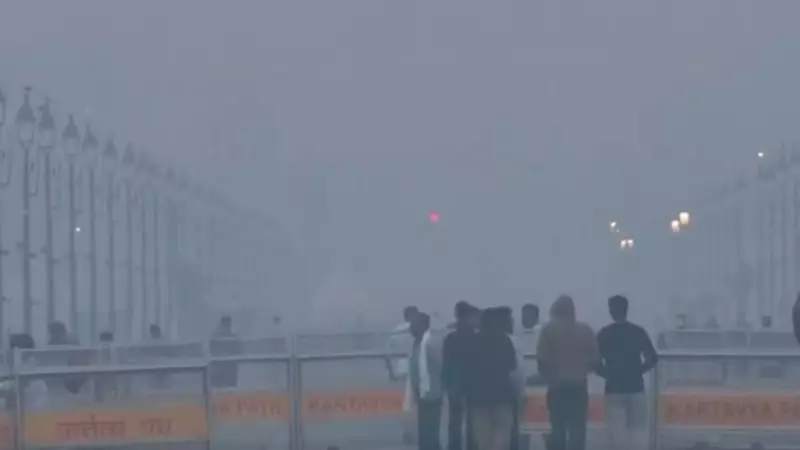
Three days after Diwali fireworks illuminated the night sky, Delhi continues to struggle under a thick blanket of toxic smog, with air quality indices stubbornly lodged in the 'severe' category. The capital's atmosphere remains hazardous to health, prompting continued enforcement of emergency measures.
Visible Pollution and Health Warnings
The severity of the situation is unmistakable to the naked eye. A dense, grey haze hangs low over the city, significantly reducing visibility and creating a palpable burning sensation in the eyes and throat of residents. Videos circulating on social media depict landmarks shrouded in pollution, making the crisis viscerally apparent.
Medical professionals are issuing stern warnings, particularly for vulnerable groups. Children, the elderly, and individuals with pre-existing respiratory or cardiac conditions are advised to minimize outdoor exposure entirely. For the general population, prolonged or heavy exertion outside is strongly discouraged.
GRAP-2 Measures in Force
In response to the persistent 'severe' Air Quality Index (AQI), the Graded Response Action Plan (GRAP) Stage-II remains active across the National Capital Region (NCR). This phase includes a suite of targeted actions designed to curb pollution emissions:
- Enhanced frequency of mechanized sweeping and water sprinkling on roads to settle dust.
- Strict vigilance and penalties to prevent open waste burning.
- Measures to ensure proper pollution control at construction sites.
A Perfect Storm of Pollution Factors
While Diwali firecrackers provided the immediate trigger, experts point to a confluence of factors sustaining the pollution episode. The post-festival spike has been compounded by unfavorable meteorological conditions, including calm winds and low temperatures that trap pollutants close to the ground. Furthermore, the seasonal practice of stubble burning in neighboring states continues to contribute significantly to the particulate matter choking the city.
This annual crisis underscores the complex and persistent challenge of air pollution in northern India, where temporary solutions struggle against a multi-source problem. The current situation serves as a stark reminder of the long road ahead in the fight for clean air.





